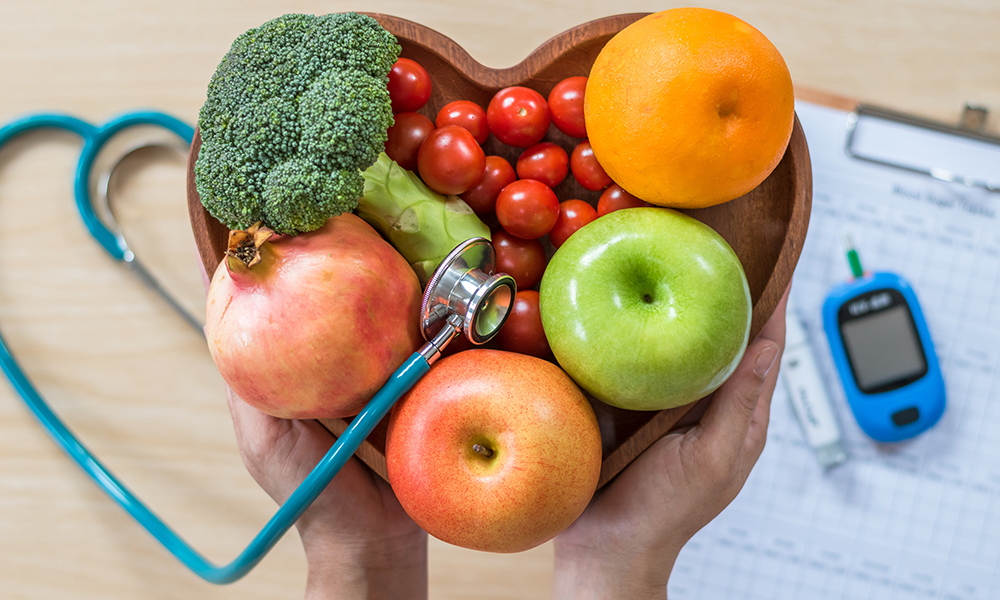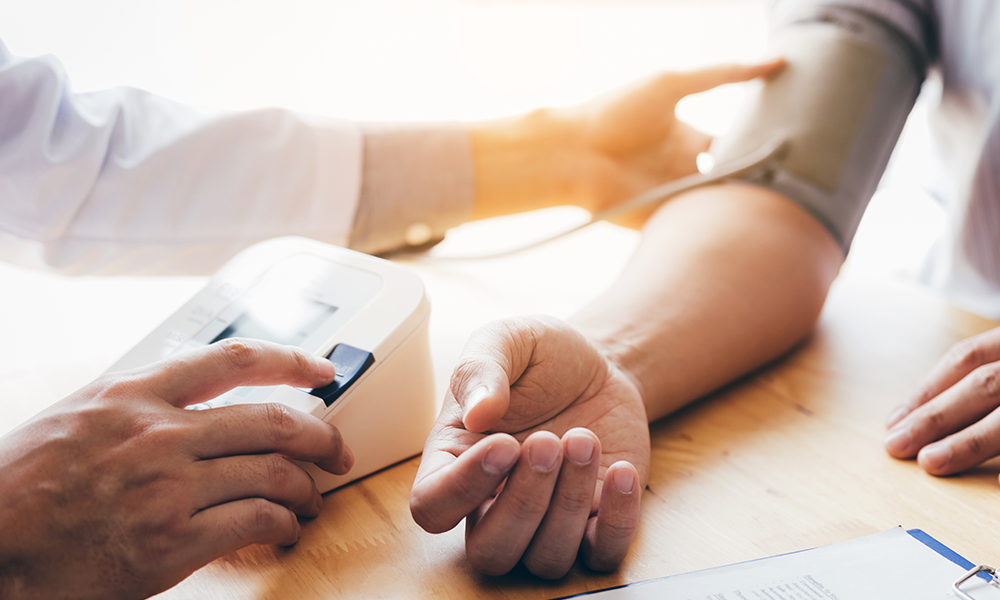September was National Cholesterol Education Month, which is a month dedicated to helping health care professionals, including nurses and doctors, spread the importance of cholesterol education and helping patients know and monitor their cholesterol levels. Although National Cholesterol Month is over, we still want to share steps you can take to help prevent or reduce high cholesterol.

What is Cholesterol?
When we hear the word “cholesterol,” we often think of juicy cheeseburgers or greasy pieces of pizza. But in fact, there is “good” cholesterol and “bad” cholesterol and our bodies need a certain amount of cholesterol to function.
Cholesterol itself is a waxy, fat-like substance that’s in all the cells in our body. This substance is used to make important hormones and vitamins and is made in our bodies naturally. We can also get cholesterol from foods like eggs, meat, and dairy. The two main forms of cholesterol are HDL and LDL.
- HDL stands for high-density lipoprotein. HDL is called the “good” cholesterol because it carries cholesterol from other parts of the body to your liver. This is an efficient process that helps your body run smoothly.
- LDL stands for low-density lipoprotein. LDL is the “bad” cholesterol because it can cause a buildup of plaque in your arteries, which can lead to coronary artery disease, a heart attack, or a stroke.
Fast Facts About Cholesterol and Cholesterol Education
Here are some important (and interesting) facts about cholesterol and cholesterol education:
- The connection between high LDL and heart attacks was recognized in 1955
- The first cholesterol-lower medication was approved in 1987
- High cholesterol has no symptoms, which makes it difficult to diagnose
- More than 35 million Americans have cholesterol high enough to put them at risk for heart disease
- People with high cholesterol are twice as likely to have heart disease than people with lower cholesterol levels
- About two-thirds of U.S. adults say they have had their cholesterol checked within the last 5 years.

Understanding Your Cholesterol Levels
Medical experts recommend having your cholesterol levels measured at least once every 5 years for everyone over the age of 20, but more frequently for men ages 35 and over and women ages 45 and over. The test is a blood test called a lipid profile, which measures total cholesterol, LDL, HDL, and triglycerides. Triglycerides are fats carried in the blood from the food we eat. They are fine in normal amounts, but too many triglycerides can be stored in fat cells throughout the body.
When you receive your cholesterol numbers, they will be a series of measurements that show total cholesterol, HDL, and LDL. While these numbers are only part of the equation and need to be taken into consideration with all of your other health stats (age, weight, smoking status, blood pressure, heart rate, etc.), they can be a good indication of your cholesterol health and whether or not you need to take action. According to Healthy Women, a lower LDL reading the better but normal is less than 200mg/dL, borderline is 200 to 239 mg/dL, and high is 240mg/dL. An optimal HDL reading is 60mg/dL, average is 50-60mg/dL, and low is less than 50mg/dL. The higher the level, the healthier it is.

Celebrate National Cholesterol Education Month All Year: Tips to Help Prevent or Reduce High Cholesterol
While having high cholesterol is a serious health consideration, there are steps you can take today to help prevent or correct high cholesterol levels. According to Mayo Clinic, here are some ways to celebrate National Cholesterol Education Month all year long by living a little healthier every day:
- Avoid foods with trans fat or saturated fats. Saturated fats are found in red meat and fully-dairy products and can raise your total cholesterol. Trans fats are found in lots of sweets, like cookies, crackers, and cakes. Too much trans fat can increase your risk for coronary artery disease.
- Eat foods rich in omega-3 fatty acids, like salmon, walnuts, and flaxseed. Omega-3 fatty acids can help reduce your blood pressure, which impacts your LDL cholesterol levels.
- Exercise for at least 30 minutes a day. Moderate physical activity can help raise your good cholesterol levels.
- Don’t smoke. Within a year of quitting smoking, your risk of heart disease is half that of a smoker.
- Lose weight if you are carrying a few extra pounds. Look for simple swaps, like drinking sparkling water instead of soda or eating air-popped popcorn instead of greasy chips. Here are more easy nutrition tips!
- Only drink alcohol in moderation
- Get your cholesterol levels checked regularly
Even though it’s over, National Cholesterol Education Month is an occasion to put cholesterol education on the front burner. Knowing your health numbers, including your cholesterol levels, can help you live a healthier life!


